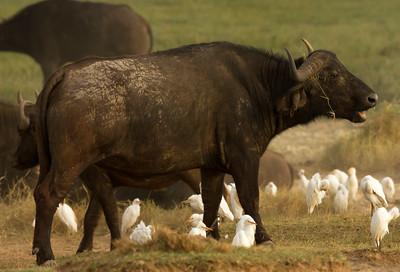If cattle egrets removed ticks from Cape buffalo, would their relationship still be considered commensalism?
2 Answers
No. Since removing the ticks has a benefit to the Cape Buffalo the relationship is symbiotic.
Explanation:
The Cape Buffalo receives a benefit from the relationship. The ticks can transfer diseases to the Buffalo. The place where the ticks suck blood from the Cape Buffalo can become a site for infections.
The Cattle egrets receive a benefit from the relationship. The ticks provide a food source for the egrets. The Cape Buffalo also provide protection for the egrets.
Since both organisms receive a benefit from the relationship it is symbiotic.
No. It would be mutualism.
Explanation:
Usually cattle egrets follow herds of large hoofed mammals (ungulates, such as cattle, buffalo, etc...). They eat the insects that have been stirred up by the buffalo as they move. This relationship is commensalism, because the birds benefit but the ungulate is neither harmed nor helped.
However, if a cattle egret eats ticks off the hide of the cape buffalo or any other ungulate, the relationship becomes that of mutualism. This is because the ticks can transfer parasites into the blood of the host animal, sickening it. So by eating the ticks off of the cape buffalo, there is now a benefit to both organisms in the relationship. The egrets get food and the cape buffalo receive fewer tick bites and fewer parasitic infections.



